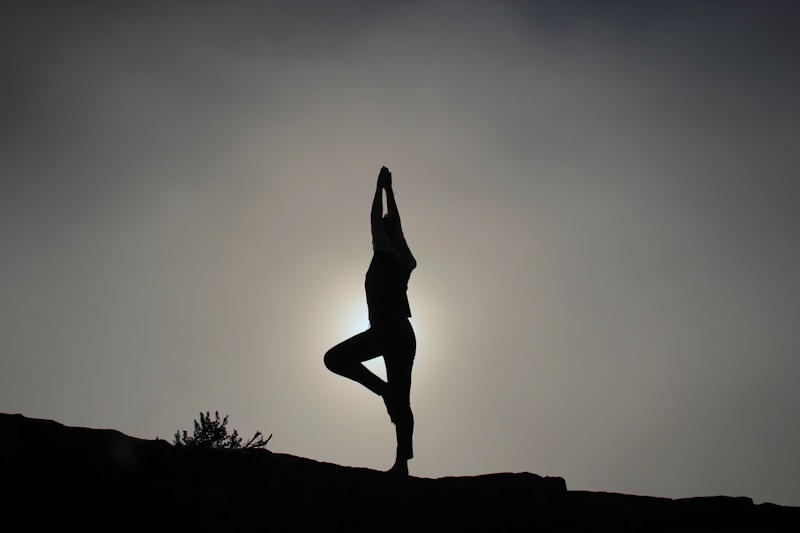What did Downward Facing Dog say to Puppy Dog pose? You are the Yin to my Yang!
Yin yoga is another branch on the ever-growing tree of yoga styles. Emerging in the late 70s and early 80s, this is a fairly new style of yoga that has its roots set deeply in the Hatha Yoga Pradipika and Taoist teachings from China and Taiwan. That’s hundreds of centuries of history rolled into one yoga practice! But how did it all start and by whom? How did these two merge together?
A Brief History Of Yin Yoga
The Taoist side of yin yoga started from Taoist yoga, where Taoists priests taught Tao Yin (a series of exercises to improve qi within the body) and breathing techniques to kung fu practitioners. The main goal of Tao Yin is to create balance within the internal and external energies and revitalize the body, mind, and spirit, as well as creating flexibility in the muscles and joints.
Qi, better known to yogis as prāna, means life force. It is breath or energy that flows through the body. Through prānāyāma and Tao Yin we are cleansing the body of old, stuck energy and filling it with new, healthier energy.
Yin yoga has always been around in traditional yoga, such as in Iyengar classes where you are encouraged to hold some poses longer. Those are considered yin poses while the active moving poses causing you to engage more muscles are identified as yang poses. Thus, to every yang there is a yin: the nature of balance.
Who Started It?
The introduction of Taoist Yoga in the western world all started with Paulie Zink whose classes offered both yin and yang postures along with the Taoist teachings of qi. His student, Paul Grilley, a Hatha Yoga teacher, loved the prolonged holding of the yin postures and formed an entire class around these postures. He started to introduce his “all yin” classes to his students who in turn fell in love with it.
Grilley then dove into the Chinese medicine teachings of energetic pathways within the body to further harmonize and create yin yoga. Although he was still calling it Taoist Yoga, his student Sarah Powers eventually coined the term “yin.” She pointed out that Grilley was not teaching the same style of Taoist Yoga that Paulie Zink was, since Zink combined both yin and yang postures, while Grilley was only focusing on the yin. Thus the name yin yoga was born.
Both Grilley and Powers spread yin yoga to their students world wide. By 2002, Grilley published Yin Yoga: Practice & Principles.
Yin Practice and Principles
In Paul Grilley’s book he lists eighteen yin poses along with five yang postures meant to be done in between poses. A typical 90-minute class will only have enough time for thirteen poses or less if you are doing poses that you are doing on two sides or have variations. Class is started with a five minute meditation, then yin poses you hold for five minutes with a minute rest in between, finally ending with a five minute Śavāsana. Sarah Powers has three tattvas (principles) of yin:
- Come into the pose to an appropriate depth
- Resolve to remain still
- Hold the pose for time
Holding these poses for a long time along with the proper breathing helps you to sit still, calm the mind and delve deeper into yourself and your practice to heal any imbalances within the body. I have known several people to start crying during a pose while in a yin class. That is the release of energy that has been held on for too long and is finally being let go. What an awesome feeling!
Yin Yoga Vs. Other Styles
Many of the poses in a yin class look similar to those of any other practice. Pigeon Pose (Eka Pada Rajakapotāsana) is called Swan Pose in yin. Pigeon is a yang pose where we engage the muscles, flex the feet, and stretch the muscles. In yin, you relax the muscles and the intention goes to the joints and deep tissues surrounding them. Props are welcomed with yin classes to help relax the muscles and be easy on the joints.
Although this may sound similar to restorative, the intent and purpose are different, as well as the audience it is directed towards. Restorative is aimed to those who are recovering from injuries or elderly, while Yin is focused as a recovery to those who are healthy and active, a balance to their everyday practice.
Yin yoga is a fairly new practice in the yoga world, but it perfectly combines two eastern traditions with a new age approach. Using qi and yoga, it’s a double doozy on clearing out any stuck energy within the body. Try out a class and feel the difference between a typical yang class and a yin yoga class. Have you tried a yin class before? What did you think? Did you have any breakthroughs? I’d love to hear your experiences!












